(Last updated on 13/10/2025)
Badajoz province is a good castle-hopping destination, with over fifty castles and citadels to choose from. Castillo de Magacela, situated in La Serena area, is worth a place on your Extremadura castles bucket list.
This short article includes a general overview, practical info and some personal tips to help you plan your trip to Magacela and make the most of your visit to the castle.

Table of contents
About Castillo de Magacela
Magacela was founded as a military post during the late Roman Republic (in the second century BCE), although it had been inhabited since the ancient times, as evidenced by the nearby dolmen and cave art.
The origins of the castle cannot be pinpointed exactly in time. Some pre-Roman structures have been found in the castle hill, but a large part of the citadel was built by the Almohads in the twelfth century, with later Christian additions in the fourteenth and fifteenth centuries.
In the thirteenth century, a priory was established in Magacela, making it the administrative centre of La Serena. Local residents, said to be largely Muslim at the time, lived within the citadel until the fourteenth century, before they started building houses on the hillside.
The decline of Magacela and its castle started in the eighteenth century when the priory was transferred to Villanueva de la Serena, apparently due to water supply issues in Magacela.
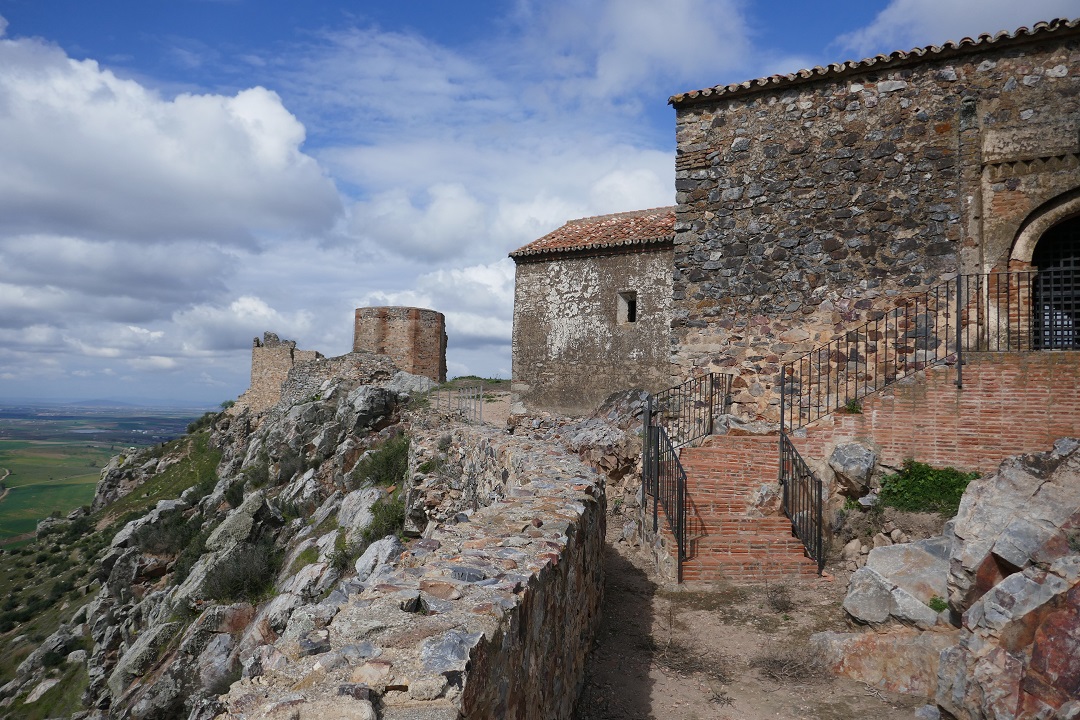
Castillo de Magacela today
The castle is in a ruinous state, but several maintenance, alterations and renovation works have been carried out over the years. The access path has also been improved, and light features, seats and bins added.
The castle complex is made of three enclosures, comprising the following remains:
Enclosure 1 is the largest of the three and includes the remains of an Almohad tower (main access to the castle), two water cisterns, a graveyard in the former bailey, a bulwark, a walled corridor, and a church.
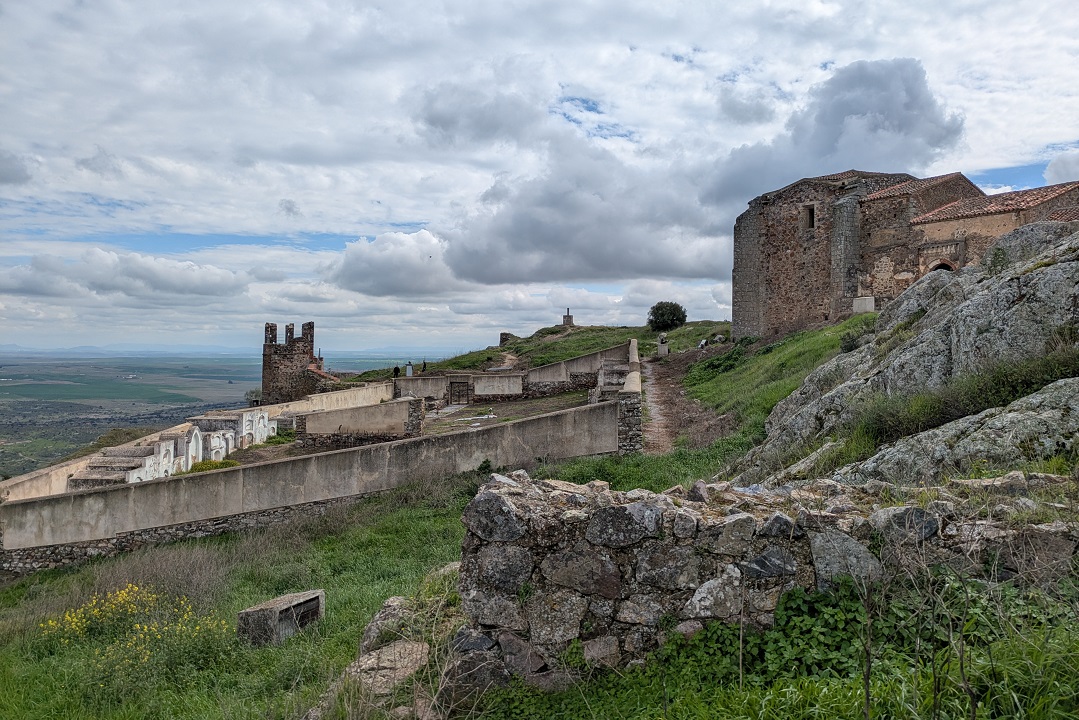
Enclosure 2 includes the remains of two small round towers, a mudwall tower, and a second access door.
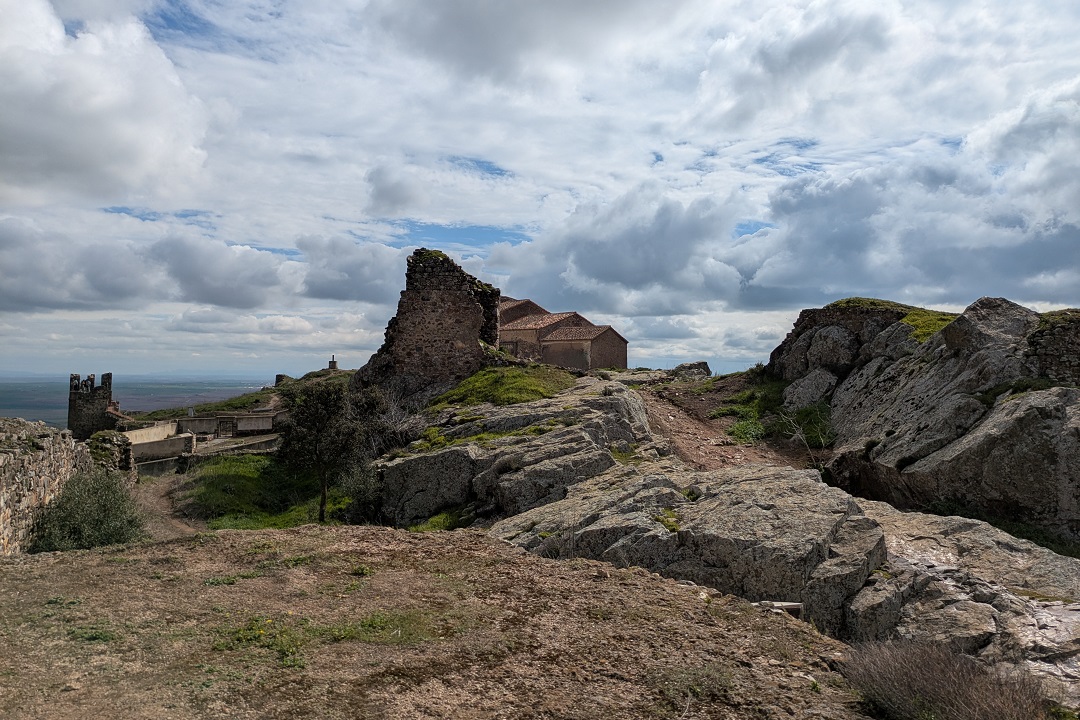
The main enclosure (the citadel or alcazaba itself) includes the keep, and the remains of a tower with a water cistern, a patio with another water cistern, a chapel, and various spaces such as kitchens, lodgements, and stables.
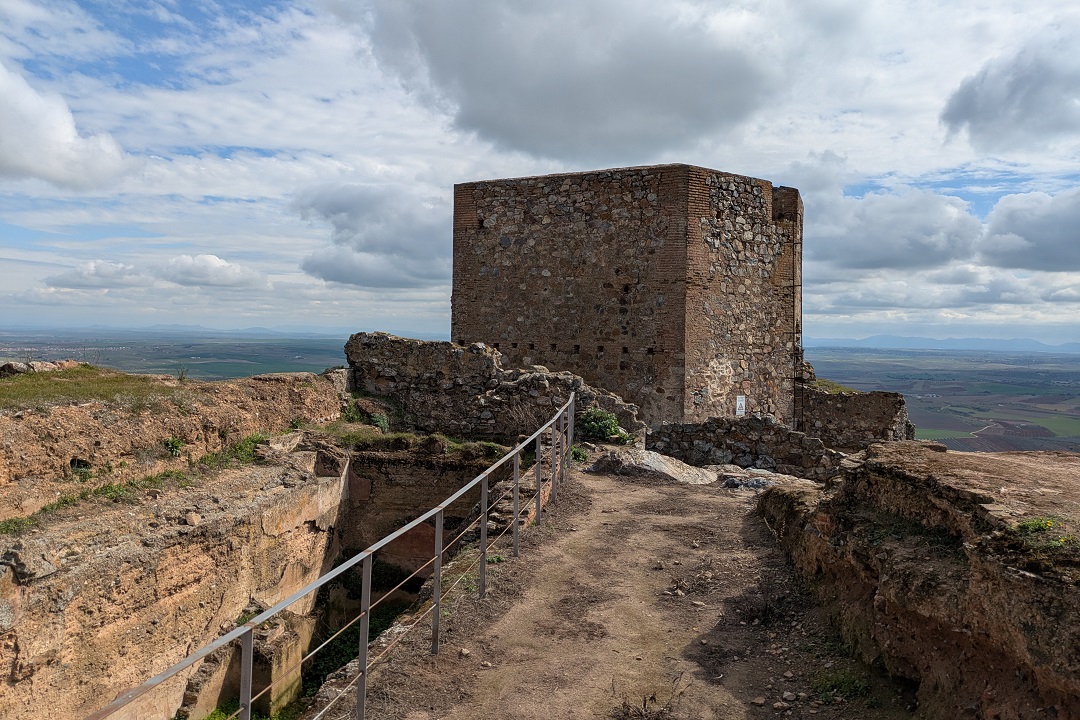
You can walk around freely around the three enclosures, but note that the keep cannot be accessed and the church is not open to the public (at least it is not open to visit freely.)
Visiting Castillo de Magacela
The castle is free to visit on a self-guided basis. It is well signposted from different places around the village, so you cannot miss it. It can only be accessed on foot and there is no parking spaces anywhere near it. It is definitely not an accessible sight.
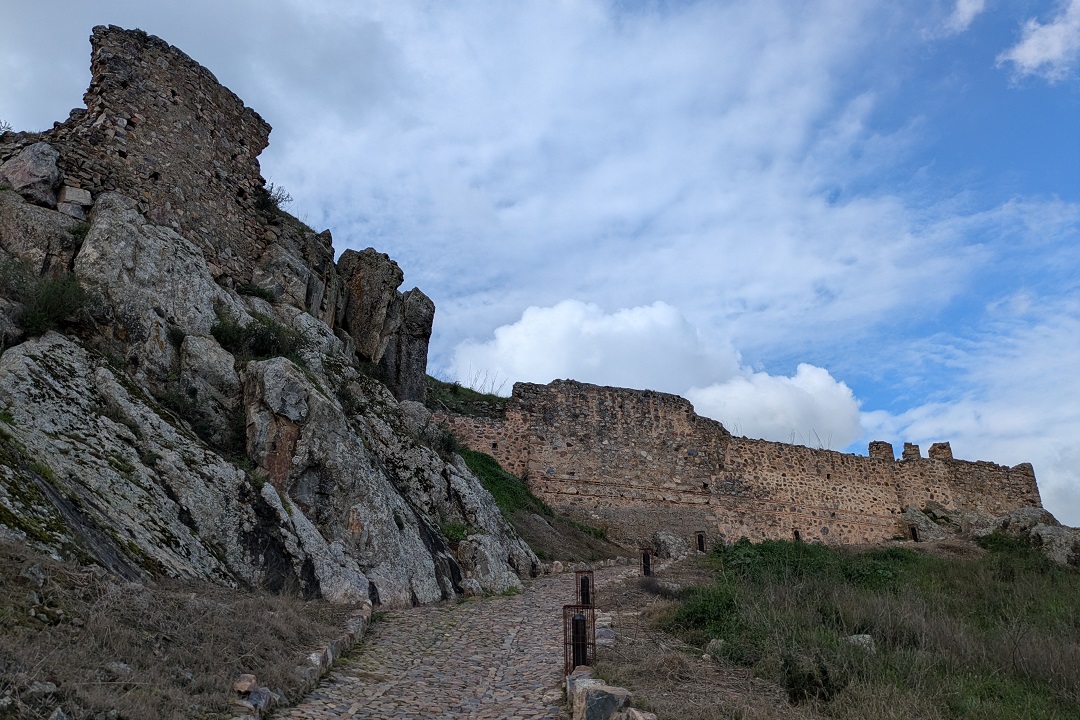
When to go: there’s no right or wrong time to visit Castillo de Magacela, but La Serena area can look particularly dry during the summer months. I’ve visited this castle a number of times, always between November and March (as far as I can remember). Generally speaking, I personally favour late autumn, winter, and spring for visiting castles.
How to get to Castillo de Magacela
Where is Magacela
Magacela is a small village in La Serena area of Badajoz province, about fifteen minutes away from Villanueva de la Serena and Don Benito, and just under one hour away from Mérida.

Parking in Magacela
Despite its tiny size, Magacela has quite a lot to see and do. For visiting the castle and the village, you’ll definitely want to park in the ‘proper’, old part of Magacela (rather than the residential area to the east of the EX-348 road). In any case, do not attempt to drive through the village; leave the car on the outskirts and walk in.
Here are two suggestions for free on-street parking:
1. The unnamed road running along the south of the castle hill and leading to Calle Tahona. They have been adding more parking spaces over time, but I normally find a space near opposite the viewpoint nearest to Calle Tahona.
2. Avenida de la Constitución. There is usually tons of parking spaces on this street, and it is an ideal place to park, if you’re doing the short Sendero del Abrigo del Águila
Walking up to Castillo de Magacela
There are several ways to walk up to the castle:
If you park on Avenida de la Constitución, you can continue along that street past a nice viewpoint until you reach the little square by the town hall and then follow the ‘castillo’ signs up Calle Don Enrique Ramírez.
If you park at Calle Tahona, turn left onto Calle Juan Carlos I and follow the signs.
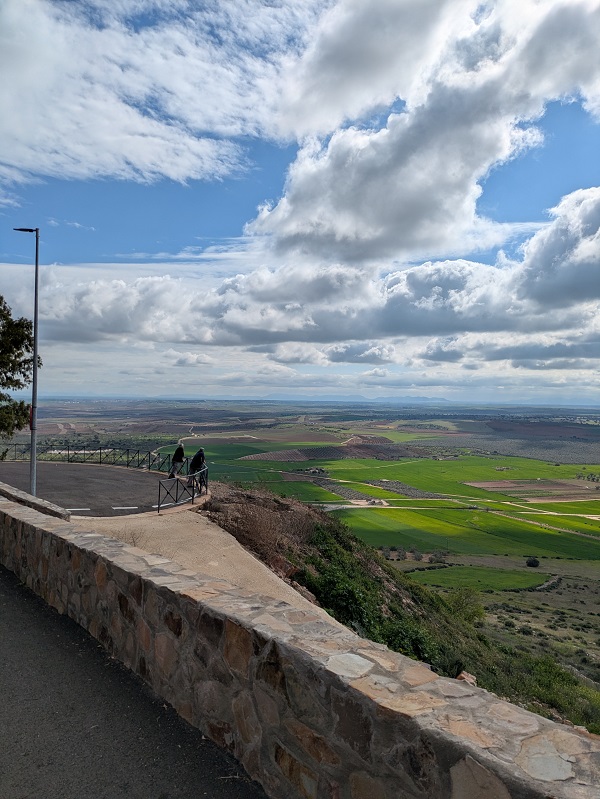

My preferred option is to park on Calle Tahona and walk up to the castle from Calle Juan Carlos I; and walk down along Calle Pósito Viejo (past the water tank) to Calle Don Enrique Ramírez and make my way back to Calle Tahona via Calle Hernán Cortés (past San Antonio chapel).
Castillo de Magacela: highlights
Almohad tower
This square Muslim tower attached to the wall serves as the entry point to the citadel. You can walk to the top via stairs and enjoy a 180-degree view.
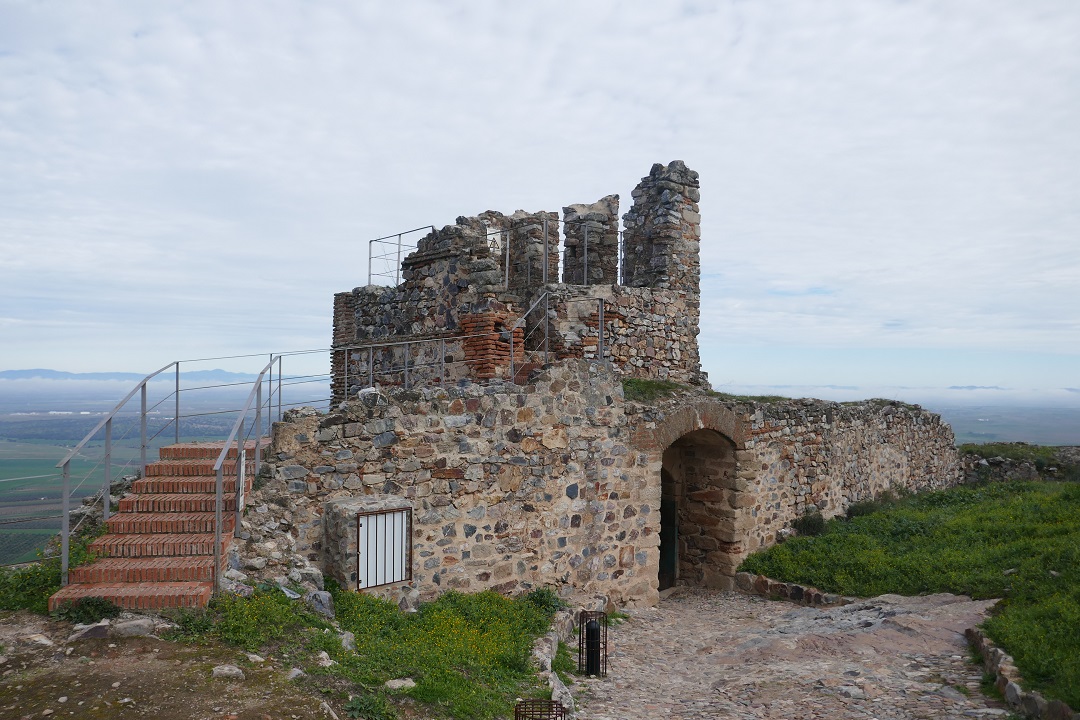
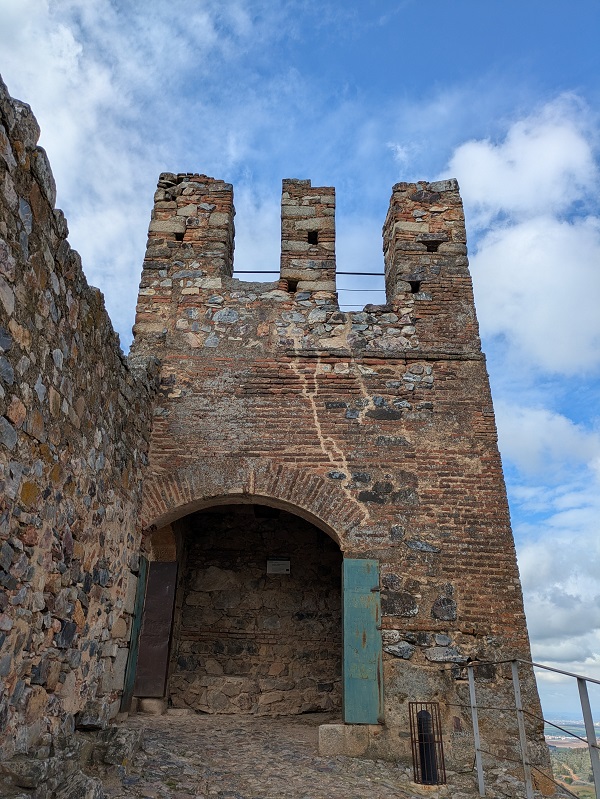
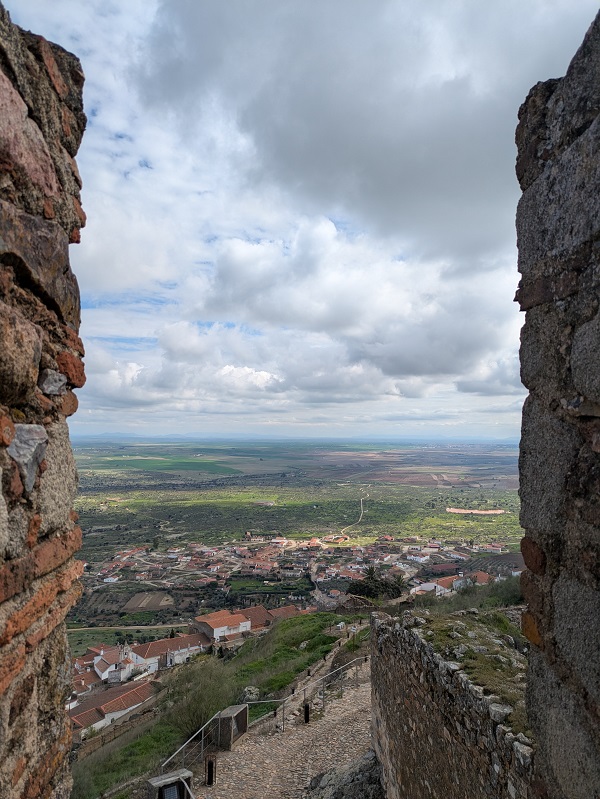
Church
The medieval Iglesia de Santa Ana was built in the highest spot of the hill on the remains of a purported mosque, using mostly rubblework and brick. It is a one-nave building comprising a succession of three attached chapels. It is generally closed, but I am aware of temporary exhibitions inside and the local authorities organising occasional guided visits.
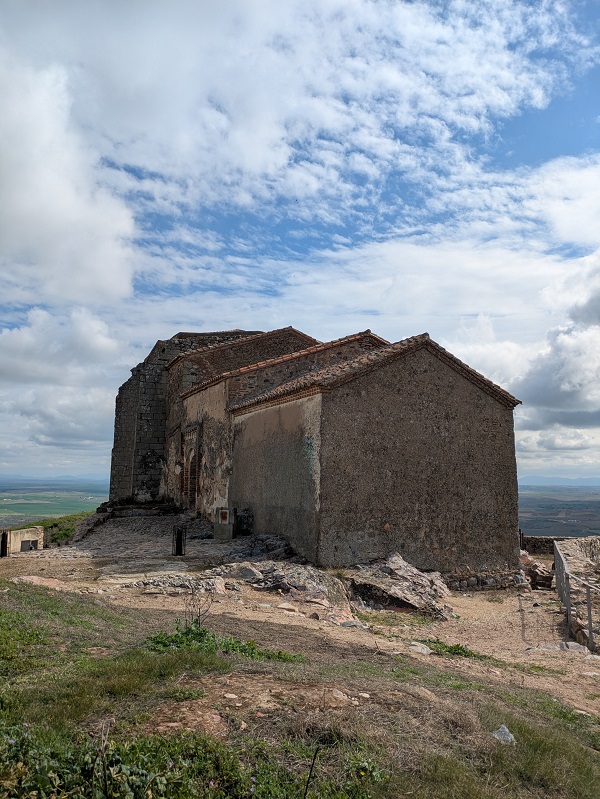

Keep
Standing tall on the western side of the main enclosure is this twelfth-century, octagonal tower, built in rubblework, with bricks only at the angles, but currently filled with mud and mortar (and, obviously, not accessible!)

Cisterns
The fortification is said to have had seven water cisterns originally. Some of them are buried, but the remains of at least four of them are visible overground across the different enclosures – two in the outer enclosure, and two in the main enclosure.
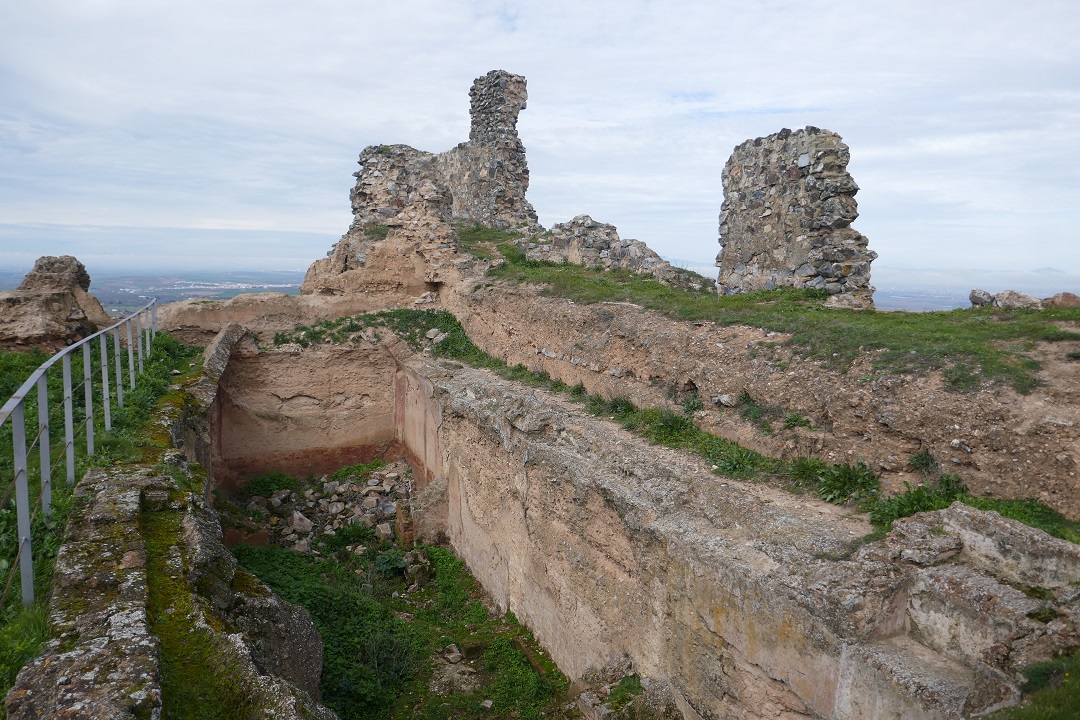
Views from Castillo de Magacela
These are, more or less, the views you get in all four directions:
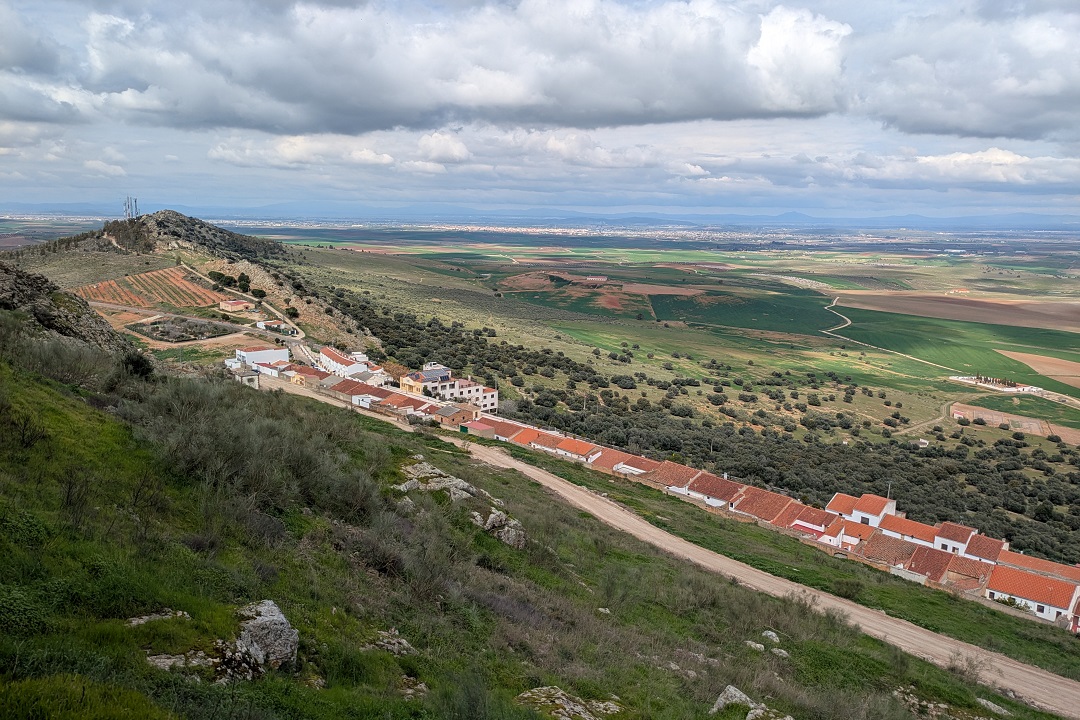
To the west
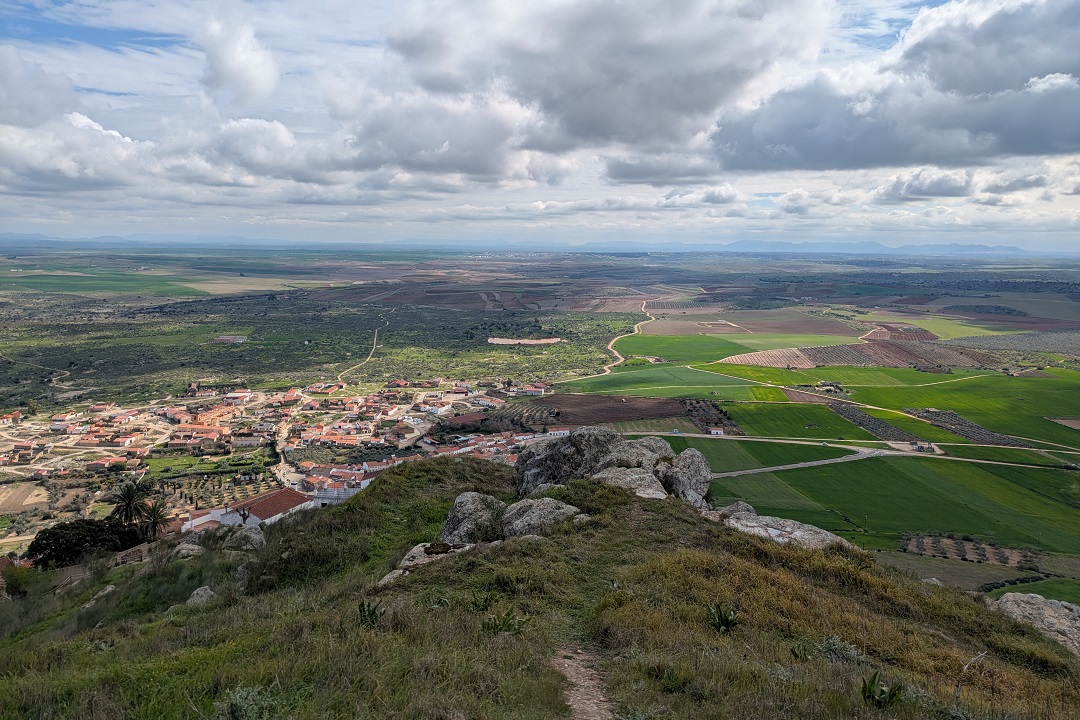
To the east
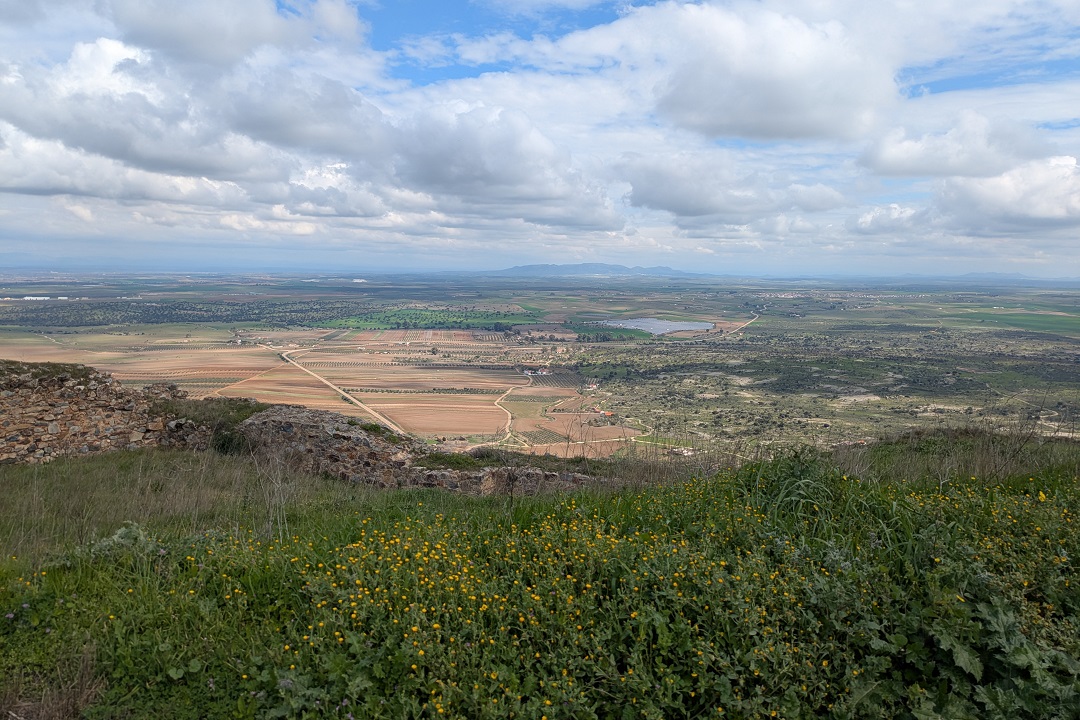
To the north

To the south
Other things to see and do in Magacela:
- Walking: Sendero del Abrigo del Águila
- Walking: Ruta de los Hornos
This content is protected by copyright and belongs exclusively to Irene Corchado Resmella. To know exactly what this means, read the 'Copyright' section in the Website terms of use.

Irene Corchado Resmella
Hi! I’m Irene (/ee-REH-neh/). Long since settled in the UK, I explore my Spanish home region of Extremadura with an inquisitive mind, a sharp eye, and the duality that comes with being both a local and a visitor. Then I write about it here to help you discover this beautiful yet overlooked part of Spain. If you have any questions after reading this article, submit a comment below! Read more about me.
